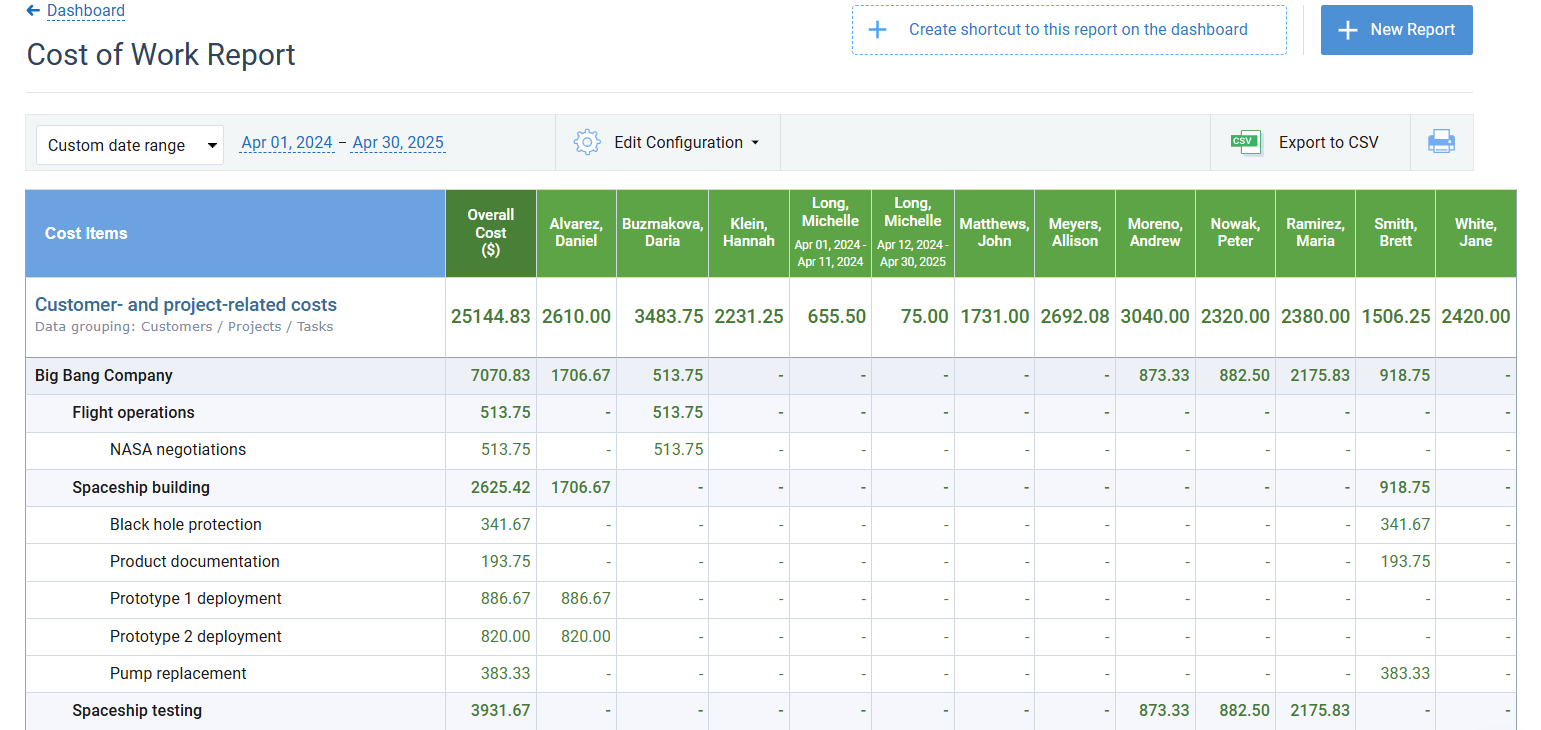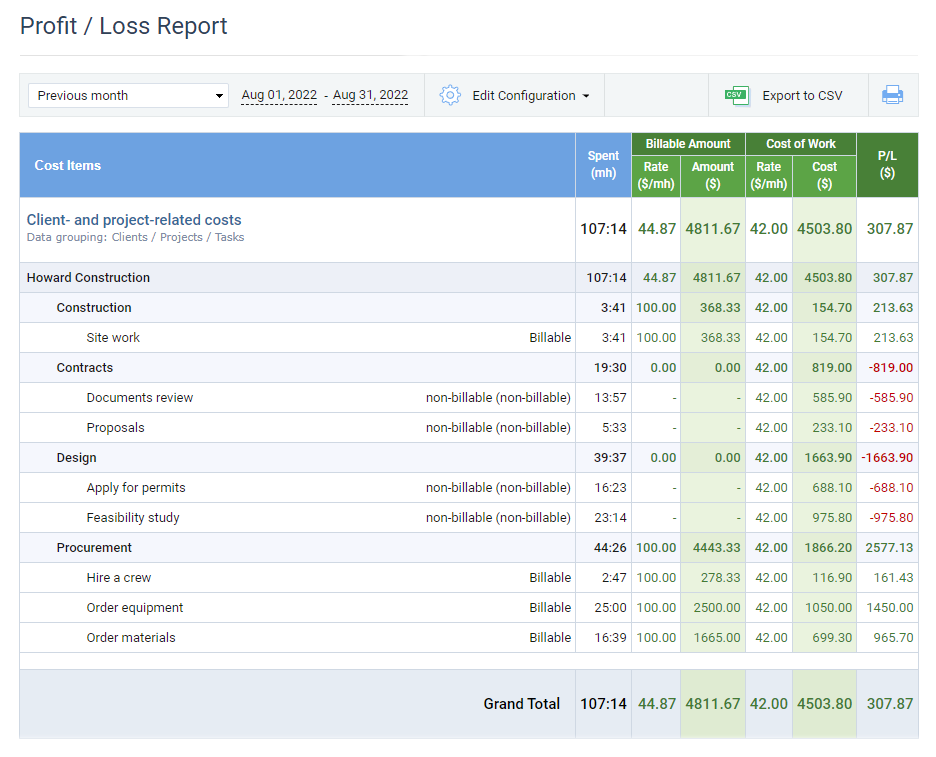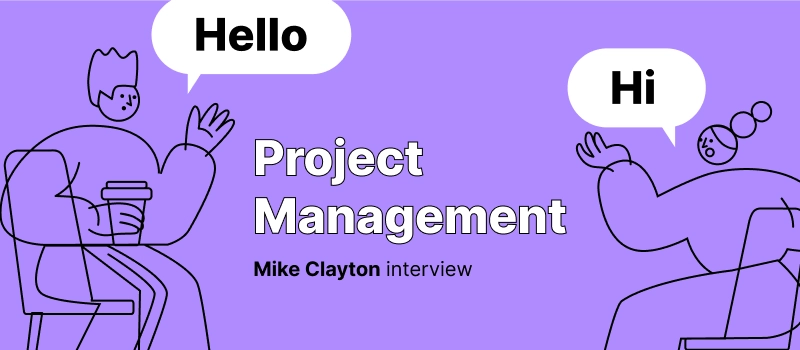
When you’re asking for funding, one of the most crucial components of your grant application is the project budget. Each foundation has its own set of rules, and funders want to see a clear and detailed financial plan that outlines how their investment will be utilized.
A well-structured grant budget showcases your resource allocation strategy and instills confidence in funders regarding the effective management of their money.
In this post, we’re introducing a free automated grant budget template that will drastically enhance your chances of winning the grant. Let’s get started!
Grant Budget Template Features and Benefits
Our grant budget template is designed to simplify your financial planning process and let you seamlessly incorporate both fixed costs and variable expenses associated with personnel, equipment, and other project components.
- The template allows you to create custom categories for direct and indirect costs, such as personnel, equipment, materials, and overhead.
- It allows you to calculate the cost of both fixed-price items and those billed hourly.
- The template is straightforward to navigate and edit: you can modify fields to fit your specific project needs, accommodating different funding requirements and organizational structures.
- The template features built-in formulas that automatically calculate totals, ensuring accuracy and saving time on manual calculations.
- The template can be used in Google Sheets or exported into XLS. This will help you track changes and manage different versions of the budget, facilitating collaboration and updates throughout the grant application process.
- The template aids in identifying resource needs and allocation, enabling more effective planning and utilization of funds.
Benefits of the actiTIME Grant Budget Template
By providing a clear breakdown of your expenses, the template aids in transparency and enhances your credibility as an applicant.
- Using a structured format for presenting financial information will increase clarity not just for potential founders but for your project team too.
- Automated calculations reduce the risk of human error, leading to more accurate budget submissions and financial projections.
- Predefined categories save time in budget preparation, allowing you to focus on other aspects of their proposals.
- A well-organized budget demonstrates professionalism and thoroughness, increasing the likelihood of gaining funder trust and support.
- The clear layout allows for easier communication with stakeholders, helping to align expectations regarding budgetary needs and constraints.
Using the Grant Budget Template
1. Open the template in Google Sheets.
2. To edit the template, make a personal copy. Go to File > Make a copy, and save it to your Google Drive.
3. Review the expense categories included in the template, such as:
- Personnel Costs: Salaries, wages, and benefits.
- Equipment: Costs associated with purchasing or leasing equipment.
- Materials and Supplies: Expenses for necessary materials.
- Other Costs: Overhead and administrative expenses.
4. Add more cost categories, such as transportation, lodging, and meals, if needed.
5. Enter your budget data in the designated fields under each category. Ensure to input:
- Descriptions of each category (e.g., specific roles for personnel).
- Quantities (e.g., number of hours or units).
- Costs (e.g., hourly rates or unit prices).
6. Utilize automated calculations: the totals and subtotals will be updated in real time as you fill in the costs.
7. Review final values to ensure accuracy. The total budget amount should reflect all categories combined. If you notice discrepancies, double-check your entries for any errors.
8. If your project needs change, you can easily adjust quantities and costs. The totals will automatically update according to your changes.
9. Once completed, you can share the Google Sheet directly with collaborators or export it as a an Excel file for submission. Go to File > Download and choose your preferred format.
Creating a Bulletproof Grant Budget to Secure Your Proposal
Having the right grant budget template is a great start, but here’s the million-dollar question: How do you gather the numbers needed to paint an accurate picture of your program activities and find historical data to back up your estimates?
Don’t worry—we’ve got your back! Keep reading for tips on crafting a grant budget that’s not just detailed and evidence-based but also perfectly aligned with your company mission.
First of all, it’s crucial that your budget reflects recosts backed by solid data. Inflated expenses can make your organization seem wasteful, while underestimating costs might raise doubts among savvy grantmakers.
So, whenever possible, leverage historical data and resource utilization reports to ensure you’re not just pulling numbers out of thin air or making wild guesses about labor costs.
Utilizing time tracking software like actiTIME throughout the grant application process will help you speak authentically about your organization’s efficiency and confidently justify your numbers to funders if any questions arise.

Once you’ve calculated your costs, it’s essential to clearly show funders how their money will be allocated.
For instance, if your project costs $50,000 and you’re requesting $30,000 from a foundation, break down how you’ll use their funds versus any matching contributions.
And don’t forget about the grant narrative, which is another way to explain what your company plans to do with the grant money if awarded.
Ensure that every aspect of your budget reflects the goals and activities outlined in your narrative:
- Start with a clear mission statement that outlines the purpose of your project. For example, “We aim to bridge the digital divide by creating a technology access program that provides low-income families with free internet access, refurbished devices, and digital literacy training to enhance educational and employment opportunities.”
- Briefly describe the project, its goals, and its significance to the community. Explain how the program will operate and its intended impact on local infrastructure.
- Clearly outline how you plan to measure the impact of your project. Include specific line items in your budget for.
- Justify each budget line item by linking it directly to these goals. For example, if you’re allocating funds for surveys, explain how this data will help assess whether you meet your target.
- Use footnotes to provide additional context for specific line items that may not be immediately clear. For example, if a line item includes a high cost for marketing materials, a footnote could explain why extensive outreach is necessary to reach underserved populations.
- Conclude by summarizing how the budget supports the overall mission and goals of the project. Reinforce how the funding will enable you to create measurable change in the community.
And last but not least, you may need to outline how you expect to generate the money required to match your spending, as most funders want to see that you have some income coming from at least one other source beyond the grant itself.
Here, it’s often helpful to use “best guess” calculations—like projecting revenues based on similar projects. In actiTIME you can use the Profit /Loss report for that.

Final Thoughts
Crafting a grant budget doesn’t have to be discouraging! With a clear vision, detailed breakdowns, and strong connections to your project goals, you can create a compelling budget that really enhances your grant proposal. So grab our template, sign up for actiTIME, and get started—you’ve got this!




















































